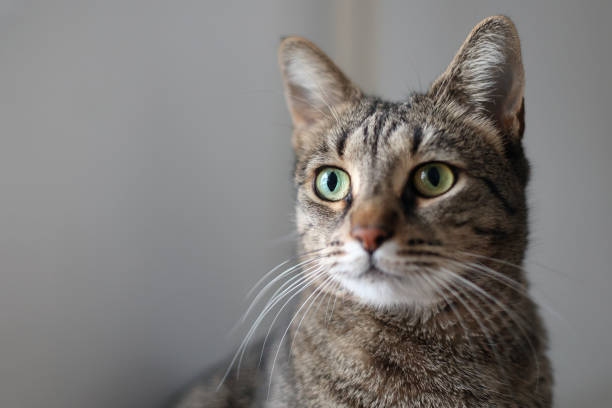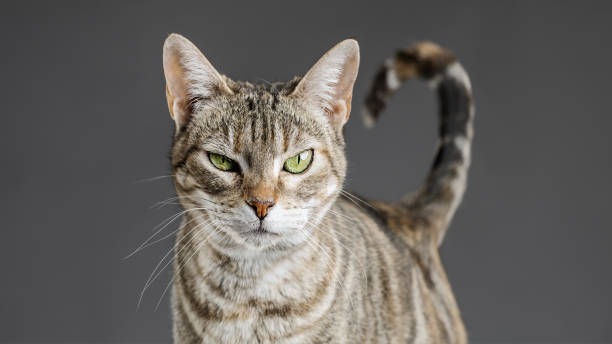European Shorthair

History:
The European Shorthair is one of Europe’s oldest and most natural cat breeds, with origins tracing back to domestic cats brought by the Romans. These cats interbred with local wild and farm cats, gradually adapting into a hardy, intelligent, and versatile breed. Recognised as a distinct breed in the 20th century, especially in Nordic countries like Sweden and Finland, the European Shorthair was developed to preserve the qualities of the traditional European domestic cat rather than to conform to foreign aesthetic standards. It was officially recognised by the Fédération Internationale Féline (FIFe) in 1982. Often confused with the British or American Shorthair, the European Shorthair maintains a more natural, less selectively bred appearance and is celebrated for its adaptability, good health, and balanced temperament.
Size: Medium to large
Height: 23–28 cm
Weight: 4–7 kg
Life Expectancy: 12 to 15 years

Breed Appearance:
The European Shorthair has a well-proportioned, muscular body with a rounded head and strong jaw, giving it a robust, practical appearance suited to its working-cat roots. The nose is straight, and the cheeks are full, particularly in males. Eyes are round and expressive, coming in colours that often correspond to the coat, such as green, gold, or copper. Ears are medium-sized with slightly rounded tips, set well apart. The coat is short, dense, and glossy, lying close to the body. It comes in a wide variety of colours and patterns, including tabby, solid, bi-colour, and tortoiseshell. Their build is athletic and balanced, giving them agility without sacrificing strength.
Health & Care:
European Shorthairs are known for their robust health, thanks to their natural development with minimal human intervention. They have no breed-specific genetic disorders, and their sturdy constitution makes them low-maintenance in terms of medical care. However, regular veterinary checkups, vaccinations, and parasite prevention are still essential. Their short coat requires minimal grooming—brushing once a week is typically sufficient to remove dead hair and maintain coat condition. Active and intelligent, they benefit from daily play and enrichment to prevent boredom and maintain physical fitness. With a proper diet and routine care, they tend to live long and healthy lives.

Living Conditions:
Highly adaptable, European Shorthairs thrive in a range of environments, from city apartments to rural farms. They are independent yet affectionate cats that enjoy human companionship but don’t demand constant attention. While they can entertain themselves, they also appreciate interaction and will form strong bonds with their owners. They coexist well with other pets and children if properly socialised. Their strong hunting instincts mean they enjoy outdoor access if safely available, but they also do well indoors with adequate stimulation. Smart and observant, they often patrol their territory and enjoy interactive toys and high vantage points.
Grooming:
Grooming needs for the European Shorthair are minimal. Their dense, resilient coat doesn’t tangle or mat and only requires occasional brushing to keep it clean and shiny, especially during shedding seasons. Bathing is rarely needed unless the cat gets particularly dirty. Basic grooming routines should also include regular nail trimming, ear checks, and dental hygiene to ensure overall well-being. Their self-sufficient nature means they typically keep themselves well-groomed, making them a good choice for owners looking for a clean, low-effort pet.

Advantages:
-
European Shorthairs are healthy, low-maintenance cats with few genetic issues and strong natural resilience. They are ideal for first-time or busy pet owners.
-
They are intelligent, independent, and curious, thriving in various home environments while forming close bonds with their families.
-
Their minimal grooming needs and clean habits make them easy to care for, while their natural good looks require little upkeep.
-
They coexist well with other pets and respectful children, making them suitable for multi-pet households or family settings.
-
Playful and agile, they are entertaining companions who enjoy games, puzzles, and moderate affection.
Disadvantages:
-
Their independent streak may make them seem aloof or disinterested in constant attention, which may not suit owners seeking a clingy or lap-focused cat.
-
They are strong hunters and may attempt to chase small pets or bring in “gifts” if allowed outdoors.
-
Their intelligence and energy require regular stimulation; without it, they can become bored and engage in unwanted behaviour.
-
They are less commonly available outside Europe, especially in North America, which may make them harder to find through breeders.
-
While affectionate, they may not tolerate rough handling, making them better suited to homes with older children or calm environments.

